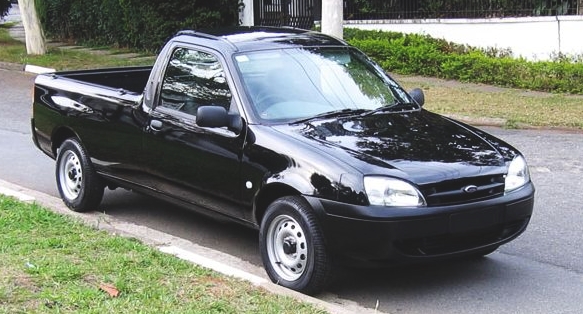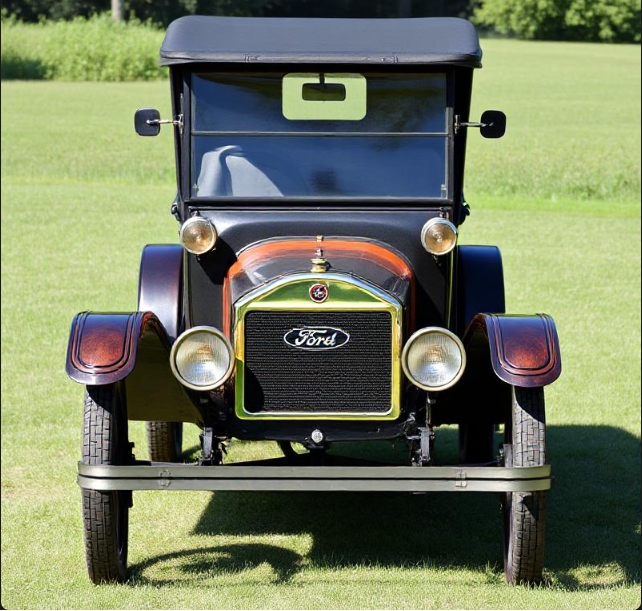The Evolution of the Chevrolet 3100 Series: A Classic American Truck
The Chevrolet 3100 Series has a rich heritage that reflects the evolution of American automotive design and consumer needs over the decades. Introduced in the mid-twentieth century, the 3100 Series has become a symbol of durability and reliability. Its iconic and timeless design has earned it a dedicated fan base and a reputation among classic car collectors. This article explores the evolution of the Chevrolet 3100 Series, including the years produced, key models, and available trim levels throughout its history.
The Birth of the 3100 Series (1947–1955)
The Chevrolet 3100 Series first emerged in 1947 and quickly captured the attention of automotive enthusiasts. This model, part of Chevrolet’s Advance Design trucks, was one of the first post-World War II pickups to hit the market. The 3100 was a full-sized pickup classified as a half-ton truck, featuring a distinctively modern style that was a marked departure from pre-war designs.
Key Features and Versions
- 1947–1953
- Base Model: The original 3100 featured a 216-cubic inch (3.5L) inline-six engine with a three-speed manual transmission. The classic art deco grille and flowing fender lines characterized its design, earning it a unique place in automotive history.
- Trims and Variants: Alongside the base model, Chevrolet offered several variants, including the 3104 (Stepside) and 3106 (Styleside) configurations. The Styleside version featured a more integrated tailgate, while the Stepside maintained a traditional appearance with separate wheel arches.
- 1954–1955.5
- Updates: The 1954 redesign brought about a new 235-cubic inch (3.9L) inline-six engine and a more modern grille. In addition, the dashboard was updated for better ergonomics and included a more refined instrument cluster.
- Trim Levels: The 1954 and 1955 models remained consistent with the previous years but introduced the 3100 as a part of the larger Task Force series, which included heavier models like the 3600 and 3800.
Special Editions and Importance
Throughout these early years, the Chevrolet 3100 Series gained recognition among small business owners and families alike. Its utility, alongside newfound comforts such as improved seating and ride quality, made it popular for both work and personal use.
The Transition: 1955.5–1962
With the introduction of the second generation in 1955, the 3100 Series saw several improvements that aligned it with the changing tastes of the market.
Key Features and Specifications
- 1955.5–1959
- Engine and Performance: The later part of the 1955 model year introduced a new V8 engine option, joining the inline-six, allowing for better performance. The truck featured a sleeker, more aerodynamic design.
- Trims: The 3100 continued to offer various configurations, including the 3104 and 3106, while newer models were distinguished by the introduction of the 3200.
- 1960–1962
- Significant Changes: The 1960 full update brought a completely new design changing the frame and introducing independent front suspension, improving ride quality. The 3100 and its variants now boasted a more modern look with features like wraparound windshields and a flatter cargo bed profile.
- Engine Options: The truck’s engine lineup had expanded, with options including a more powerful 283-cubic inch (4.6L) V8. The emphasis on performance catered to both the leisure and work-oriented truck markets.
The Evolution of the 3100: 1963–1980
From the 1960s onward, the Chevrolet 3100 Series went through several transitions, adapting to changing regulations and consumer preferences. The series evolved significantly and split into multiple lineups as new generations of trucks emerged.
Notable Developments
- 1963–1972 (C/K Series)
- New Design: The 1963 models marked the transition to the C/K series. The 3100 designation was phased out in favor of more versatile model names, but the truck’s essence remained. Throughout this period, the emphasis was on providing varying payload capacities, leading to the introduction of the C10, C20, and more.
- Features: The wide range of options included air conditioning, stylish interiors, and enhanced safety features.
- 1973–1980
- More Engine Choices: Fuel economy became a priority in the ’70s, leading to the introduction of smaller and more efficient engines. The C/K trucks would continue to boast increased payload capacities while focusing on comfort.
- Performance and Trim Levels: Models such as the Silverado came into play during this time, offering higher trim levels with additional features like sound insulation, luxury interiors, and advanced stereo systems.
.
MANY auto lovers not only spend time in their garages to tinker on their autos, but have other projects going on in there as well. Wood working is a popular pastime for the creative type of individual. Not sure what to make next? Or thinking about getting into this kind of hobby? There’s lots of possibilities… Here’s some of them…

.
Revival of the Classic: 1988–2002
The classic Chevrolet 3100 nomenclature largely faded from production as Chevrolet focused on C/K designations and modernizing its truck lineup. However, the spirit of the 3100 series was revived with classic editions and styling cues in the late ’80s and ’90s.
Highlights of the Era
- 1988–1998
- C/K Series Continuation: This era saw the C/K trucks continue to expand with the ‘Rounded Line’ aesthetic, featuring more significant emphasis on aerodynamics.
- Durability and Options: The C1500 and similar models became popular, emphasizing work performance and family utility within the same vehicle.
- 1999–2002
- New Generations: By the end of the ’90s, the C/K series transitioned to the GMT800 platform, which introduced new engine configurations and greater comfort.
Conclusion
The Chevrolet 3100 Series is emblematic of American ingenuity and adaptability. Over the decades, it has evolved through various configurations, retaining its core appeal as a reliable and durable vehicle. From its post-war inception through the modern era, the truck has adapted to the changing needs of consumers while maintaining its distinctive design.
While the 3100 moniker is no longer in production, its legacy lives on as an iconic representation of Chevrolet’s commitment to producing high-quality trucks that meet the demands of both consumer and commercial markets. For quintessential American truck enthusiasts and collectors, the Chevrolet 3100 Series is a cherished chapter in automotive history. Whether in pristine condition or as a well-worn workhorse, the spirit of the 3100 continues to be celebrated, reminding all of its influential role in the automotive landscape.







